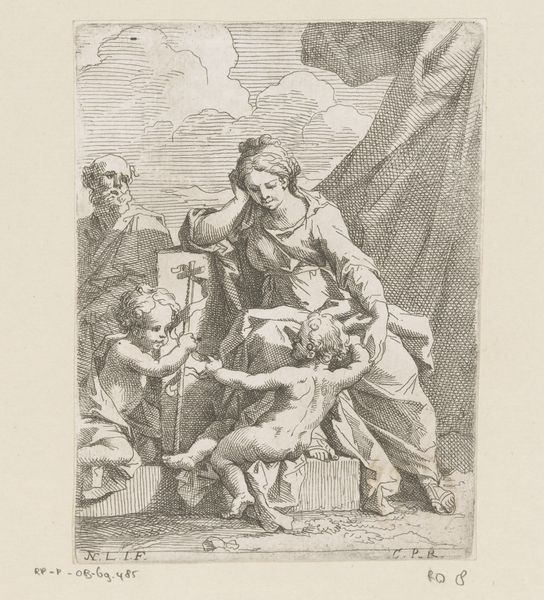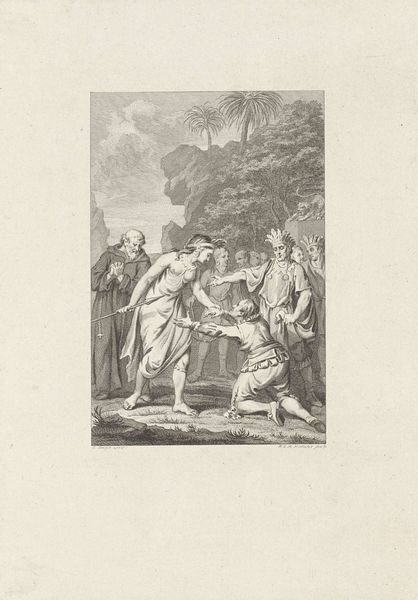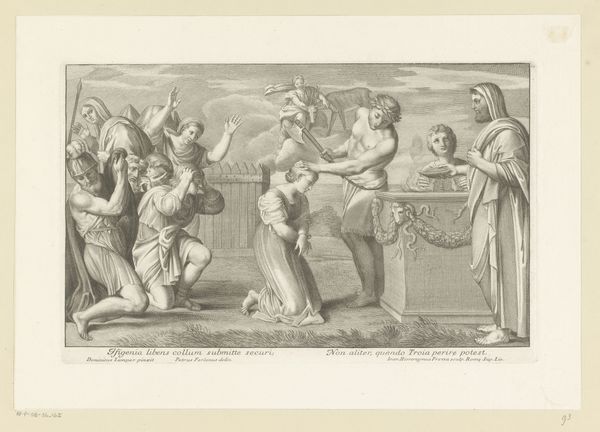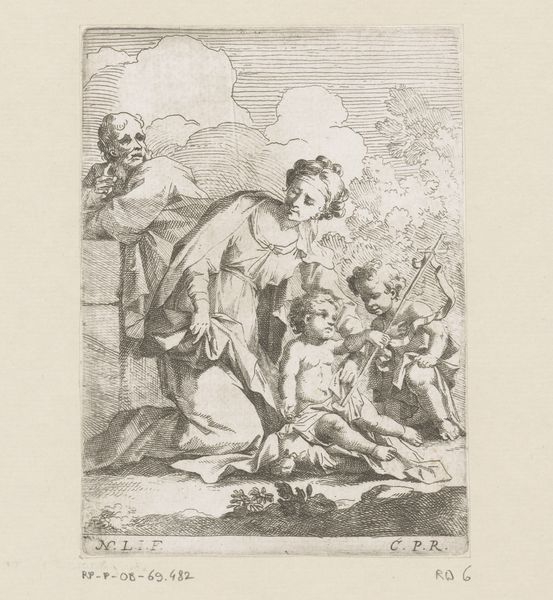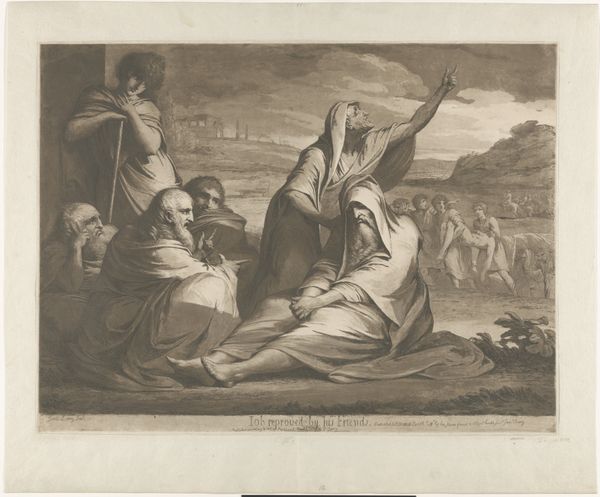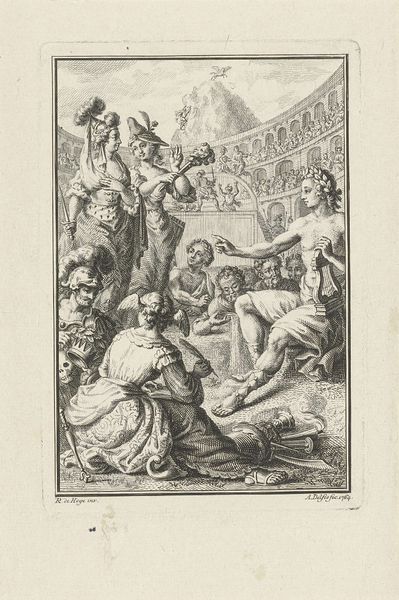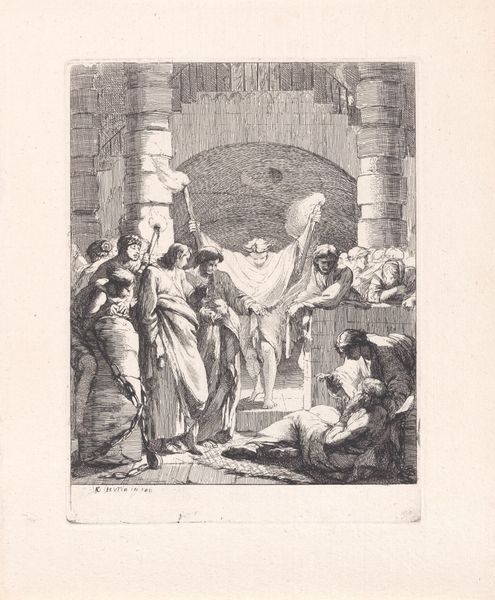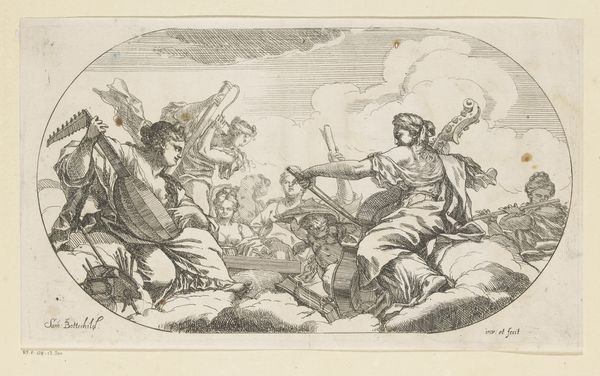
print, engraving
#
allegory
#
baroque
# print
#
classical-realism
#
figuration
#
line
#
engraving
Dimensions: height 64 mm, width 86 mm
Copyright: Rijks Museum: Open Domain
Editor: This is "Cardinal Virtues," a 1717 engraving by Bernard Picart, here at the Rijksmuseum. It feels like I'm looking at a gathering of classical goddesses floating on clouds. The figures and objects seem symbolic... but what do they signify? What can you tell me about it? Curator: This image presents a visual codex of moral and ethical ideals. It is fascinating how Picart distills these concepts into symbolic figures. See the figure holding a mirror? That's Prudence, the ability to discern appropriate actions. Mirrors traditionally symbolize self-knowledge. Editor: So, looking into the mirror represents knowing yourself, your motivations? Curator: Precisely. And next to her, that is Fortitude, armed with a club, representing strength of character to overcome obstacles. Doesn't it remind you of Hercules? The way visual memory allows for narratives to persist across time? Editor: Absolutely. The club really roots her in that classical heroism. What about the figure holding the scales? Curator: That's Justice, naturally, essential for societal harmony. But notice how the cherub peers at her... are they impartial arbiters of right and wrong or… Editor: Perhaps more of a warning, reminding us that justice is always being watched and should not be corrupted. And the fourth figure with the bowl? Curator: Temperance, encouraging moderation and self-control in all things. These virtues, carefully composed, formed a crucial moral framework in the 18th century. These aren’t just figures; they're invocations, reminders. What emotional impact does the engraving have on you now that you know more? Editor: Knowing the symbolism gives the image a lot more gravity. It's no longer just a pretty scene; it's a lesson, a reminder of how to live. Curator: And that’s how images embed values in the viewer’s mind through enduring visual language!
Comments
No comments
Be the first to comment and join the conversation on the ultimate creative platform.


